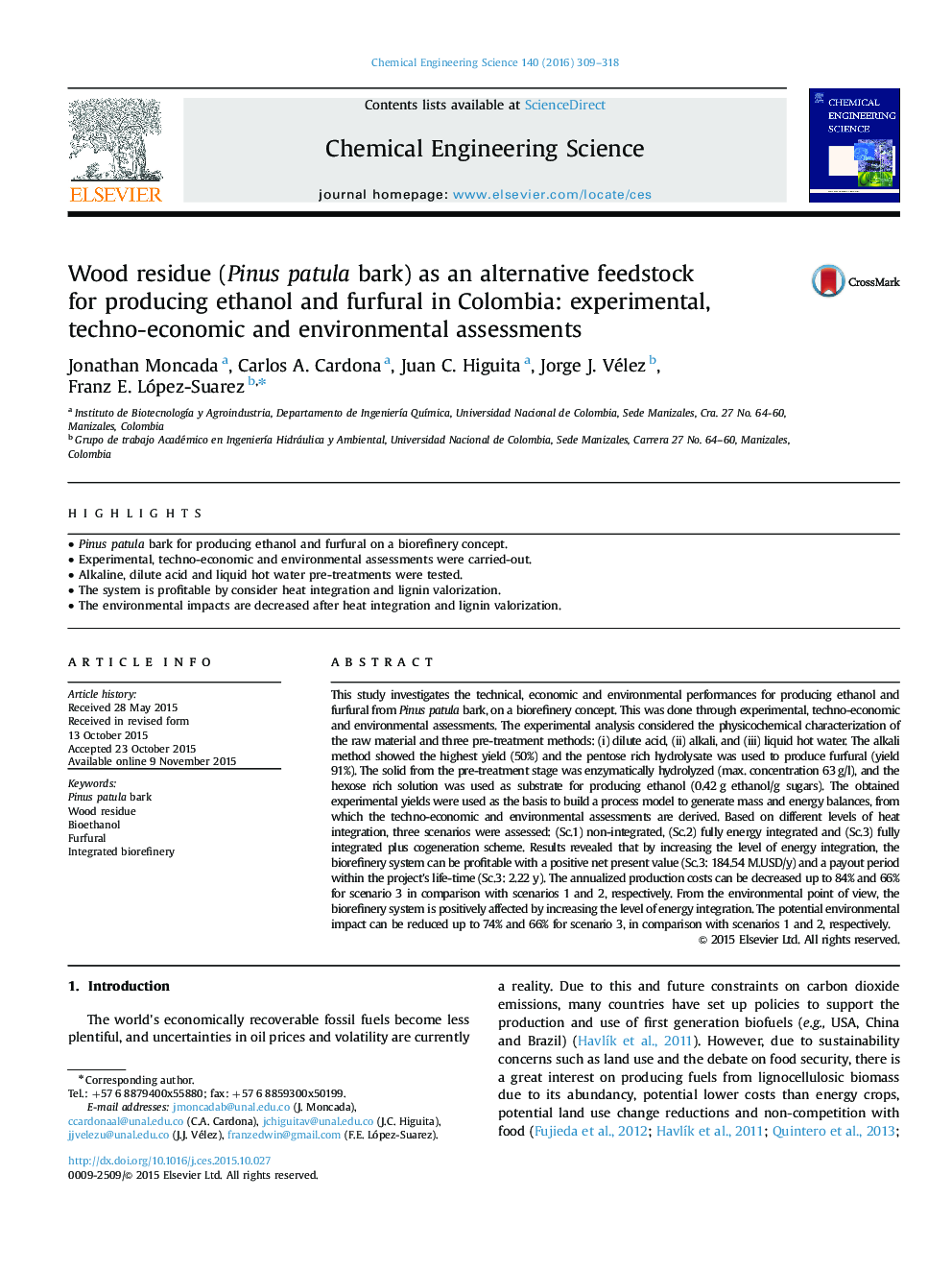| کد مقاله | کد نشریه | سال انتشار | مقاله انگلیسی | نسخه تمام متن |
|---|---|---|---|---|
| 154552 | 456843 | 2016 | 10 صفحه PDF | دانلود رایگان |

• Pinus patula bark for producing ethanol and furfural on a biorefinery concept.
• Experimental, techno-economic and environmental assessments were carried-out.
• Alkaline, dilute acid and liquid hot water pre-treatments were tested.
• The system is profitable by consider heat integration and lignin valorization.
• The environmental impacts are decreased after heat integration and lignin valorization.
This study investigates the technical, economic and environmental performances for producing ethanol and furfural from Pinus patula bark, on a biorefinery concept. This was done through experimental, techno-economic and environmental assessments. The experimental analysis considered the physicochemical characterization of the raw material and three pre-treatment methods: (i) dilute acid, (ii) alkali, and (iii) liquid hot water. The alkali method showed the highest yield (50%) and the pentose rich hydrolysate was used to produce furfural (yield 91%). The solid from the pre-treatment stage was enzymatically hydrolyzed (max. concentration 63 g/l), and the hexose rich solution was used as substrate for producing ethanol (0.42 g ethanol/g sugars). The obtained experimental yields were used as the basis to build a process model to generate mass and energy balances, from which the techno-economic and environmental assessments are derived. Based on different levels of heat integration, three scenarios were assessed: (Sc.1) non-integrated, (Sc.2) fully energy integrated and (Sc.3) fully integrated plus cogeneration scheme. Results revealed that by increasing the level of energy integration, the biorefinery system can be profitable with a positive net present value (Sc.3: 184.54 M.USD/y) and a payout period within the project׳s life-time (Sc.3: 2.22 y). The annualized production costs can be decreased up to 84% and 66% for scenario 3 in comparison with scenarios 1 and 2, respectively. From the environmental point of view, the biorefinery system is positively affected by increasing the level of energy integration. The potential environmental impact can be reduced up to 74% and 66% for scenario 3, in comparison with scenarios 1 and 2, respectively.
Journal: Chemical Engineering Science - Volume 140, 2 February 2016, Pages 309–318